Baking Buttermilk Rusks for Breakfast Traditions
35 min read Discover how to bake classic buttermilk rusks, celebrating breakfast traditions with step-by-step tips, texture secrets, and perfect dunking for coffee or tea. October 08, 2025 15:08
The first rusk always gives itself away with a soft hiss as it breaks cleanly between your fingers. Steam lifts from the enamel mug—moer koffie, brewed black on the stove—while the crumb takes on the dark stain of morning ritual. The bite is steady, not brittle: it yields after a second, like driftwood softened by tide, and then floods the palate with toasted grain, buttery tang, and the mellow lactic kiss of buttermilk. In South Africa, this is more than breakfast. It’s a handshake across generations, an edible time capsule that pairs a winter farm kitchen with a city balcony, the Karoo with Cape Town, the Highveld with the bushveld. Baking buttermilk rusks is a way to pin down home.
What a Rusk Really Is—and Why It Matters

The rusk—beskuit in Afrikaans—arrived in South Africa with Dutch and Huguenot settlers, its lineage traced back to Dutch beschuit, a hard twice-baked bread meant to travel long distances. On the high, dry plains, the double-baked method could turn a day’s work into months of sustenance. The Afrikaner trekboers valued the rusk because it survived heat, dust, and time, and because it softened reliably in coffee at dawn.
Buttermilk rusks, karringmelk beskuit, are a particularly beloved branch of the family: tender-crisp once dried, fragrant with cultured dairy, and often less sweet than the store-bought versions. If you grew up with a tin of Ouma Rusks in the pantry—South Africa’s iconic brand born in 1939 in Molteno, Eastern Cape—you know the snap and dunk routine by heart. Yet homemade rusks draw the line straight back to kitchen tables, enamel bowls, and wooden spoons: a batter or dough perfumed by butter, buttermilk, and vanilla, baked, sliced, and then dried low and slow until each piece turns into a keeper.
Buttermilk: The Tang, the Science, and the Soul

Buttermilk is the rusk’s backbone. Its gentle acidity tenderizes gluten, nudges the rise by reacting with baking soda, and adds a cultured tang that lingers long after the dunk. When you use real cultured buttermilk (widely available in South African supermarkets) or amasi (fermented milk, a beautifully local substitution), you invite complexity: the kind of quiet flavor that makes butter taste more buttery and vanilla taste deeper.
There’s chemistry here: acidity from buttermilk speeds protein denaturation in the egg, setting structure before fat can melt out. That means the crumb holds during the first bake, then dries evenly in the second without collapsing into sawdust. Buttermilk’s lactose and milk solids also brown beautifully, which is why a good rusk carries a tawny, caramelized edge even before it’s dried.
Flavor-wise, buttermilk behaves like an amplifier. It wakes up wholewheat nuttiness, carries citrus zest to the nose, and turns aniseed from licorice-loud to parlor-soft and buttery. When warmed by the oven, the aroma shifts from yogurt-bright to something rounder—like freshly baked scones laid on a tea towel.
Ingredients with a South African Accent

Great rusks start with honest pantry goods, and South African bakers have favorites worth naming:
- Flour: Snowflake cake flour is standard in many home kitchens for soft-crumb rusks. For heartier character, try stoneground flours from Eureka Mills (Western Cape) or Gideon Milling—these bring a gentle grain sweetness and a slightly chewier bite. If you lean rustic, blend cake flour with 25–40% wholewheat.
- Leavening: Baking powder provides all-purpose lift; baking soda pairs with buttermilk for extra nudge. Many traditional recipes use self-raising flour; you can go that route or control the lift by mixing your own.
- Fat: Unsalted butter gives a classic dairy richness; neutral oil (like sunflower) softens the crumb and keeps rusks crisp rather than brittle after drying. Many family recipes use a combination for balance.
- Sugar: White granulated sugar keeps flavors clean; light brown adds a malty backbone. Traditional rusks skew less sweet than biscuits—remember, you’ll dunk into something sweet or rich.
- Buttermilk: Cultured buttermilk is ideal. Amasi works beautifully (strain slightly if very loose). In a pinch, full-fat plain yogurt thinned with milk or water gives a compatible acidity.
- Flavorings: Vanilla, aniseed (anys), naartjie zest in winter, or a whisper of almond extract for muesli versions. Cape pantry extras—sesame, sunflower, pumpkin seeds; chopped dried apricots; and coconut—add tooth and aroma.
- Salt: Don’t skimp. A slightly salty rusk stands up to coffee and brings out the butter.
For the curious: a typical South African home-baked rusk leans toward a scone dough in the first bake—firm yet tender—then transforms into a long-keeping pantry staple through drying.
The Double-Bake Method, Demystified
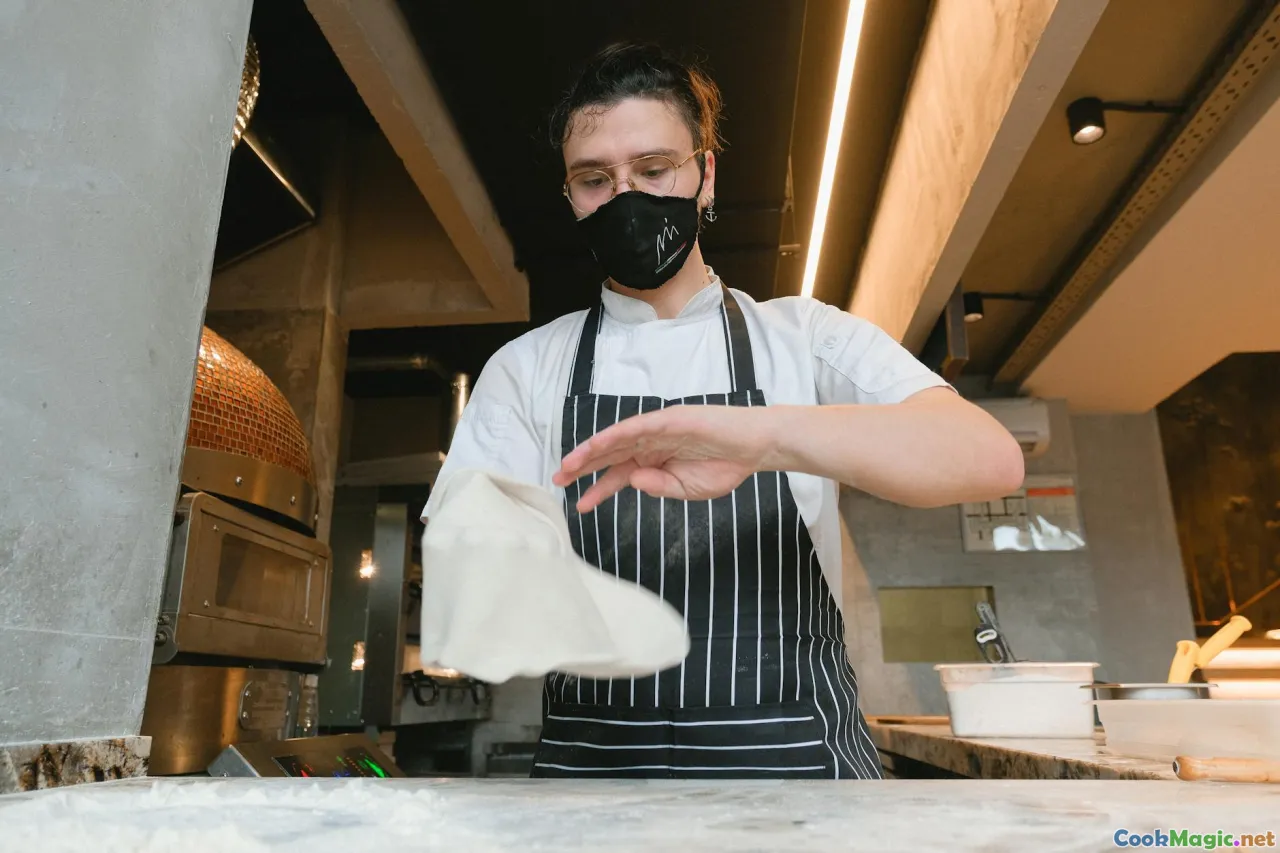
Rusks are not simply crunchy bread. The two-stage process is essential.
-
First bake (set the crumb): You bake a single large slab or closely packed buns at moderate heat until just cooked through—golden with a springy center. The goal is a bread-cake hybrid that slices cleanly without crumbling.
-
Slice and dry: Once cooled enough to handle, you cut the slab into finger-length rectangles and return them to a very low oven (or a warming drawer, or even a barely warm wood-fired oven) to dry over hours. The edges toast gently; the interior dehydrates slowly, preventing toughening.
That’s the magic: drying transforms a pleasant bake into a travel-hardy, dunk-ready rusk with impeccable shelf life.
A Story from the Karoo Kitchen Table
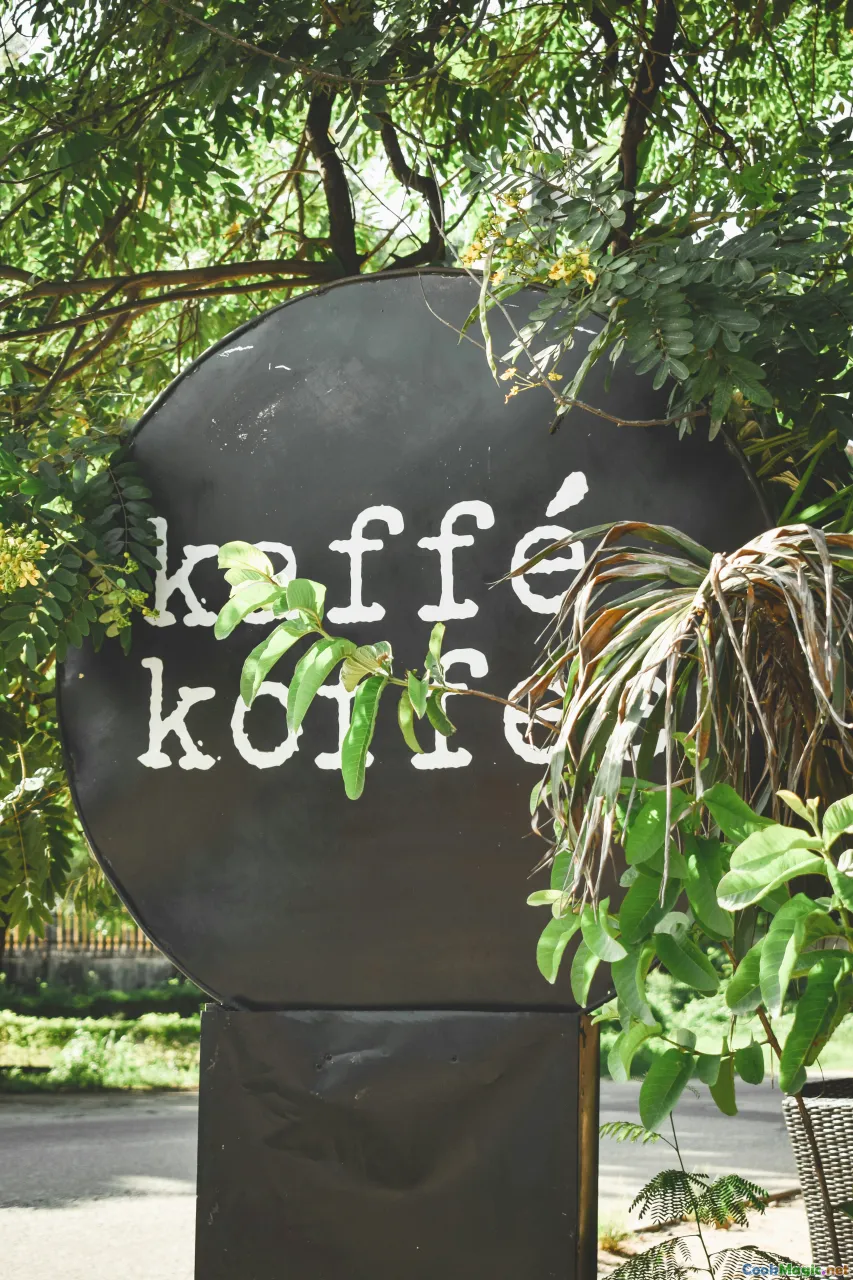
When I first learned to bake rusks, it was in a Graaff-Reinet kitchen with shutters half-open to keep out the late-summer heat. The host, tannie Annemarie, kept her sugar in a blue Ouma tin, dented where a cupboard door had caught it years before. She measured flour with a china teacup, flicking in just a breath of aniseed—“only enough that you think you won’t taste it”—and warmed the buttermilk slightly so the butter wouldn’t seize when stirred together. While the first bake rose and settled, we brewed moer koffie directly in a blackened kettle on the gas hob. The rusks cooled under a dishcloth “so they don’t catch a draft,” she said.
Her drying method was pure Karoo: oven off, door propped with a wooden spoon, rusks left overnight in a house that never fully lost the afternoon’s warmth. In the morning, they were glassy-hard but not brittle, with a sheen of fat that caught the light. We dunked them while the weaver birds kicked up a noise in the mulberry tree, and I understood what South Africans mean when they call coffee boeretroos—farmer’s comfort.
The Professional Baker’s Breakdown: Ratios and Texture Targets
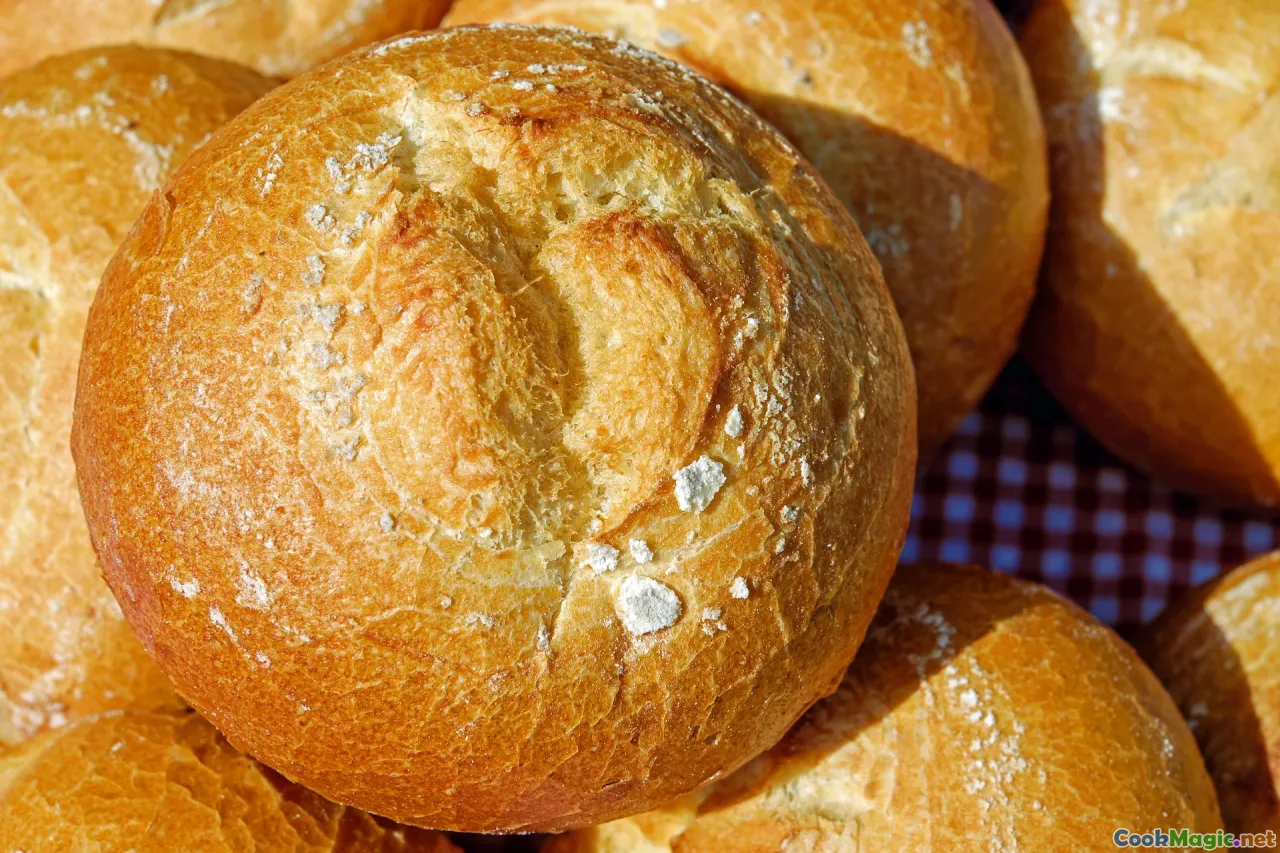
For consistent results, work by weight. A versatile buttermilk rusk formula looks like this (baker’s percentages, using flour as 100%):
- Flour (cake or a blend): 100%
- Sugar: 20–25%
- Fat (butter and/or oil): 20–25%
- Eggs: 10%
- Buttermilk: 45–55% (adjust for flour type)
- Leavening: 3% baking powder + 0.5% baking soda
- Salt: 1–1.2%
Texture targets after the first bake:
- Crumb should be fine to medium, with small, uniform holes and a tender squeeze.
- Top should be golden; internal temp around 96–98°C (205–208°F) indicates set crumb.
- Sliceability: A serrated knife should pass without tearing; slight crumbling at the edges is normal.
After drying:
- Water activity should feel “glassy”: no flex when pinched, but not chalky; the center snaps cleanly.
- Weight loss: Expect approximately 8–12% moisture loss during drying for optimal crunch that revives perfectly on dunking.
Classic Buttermilk Rusks: A Step-by-Step Recipe
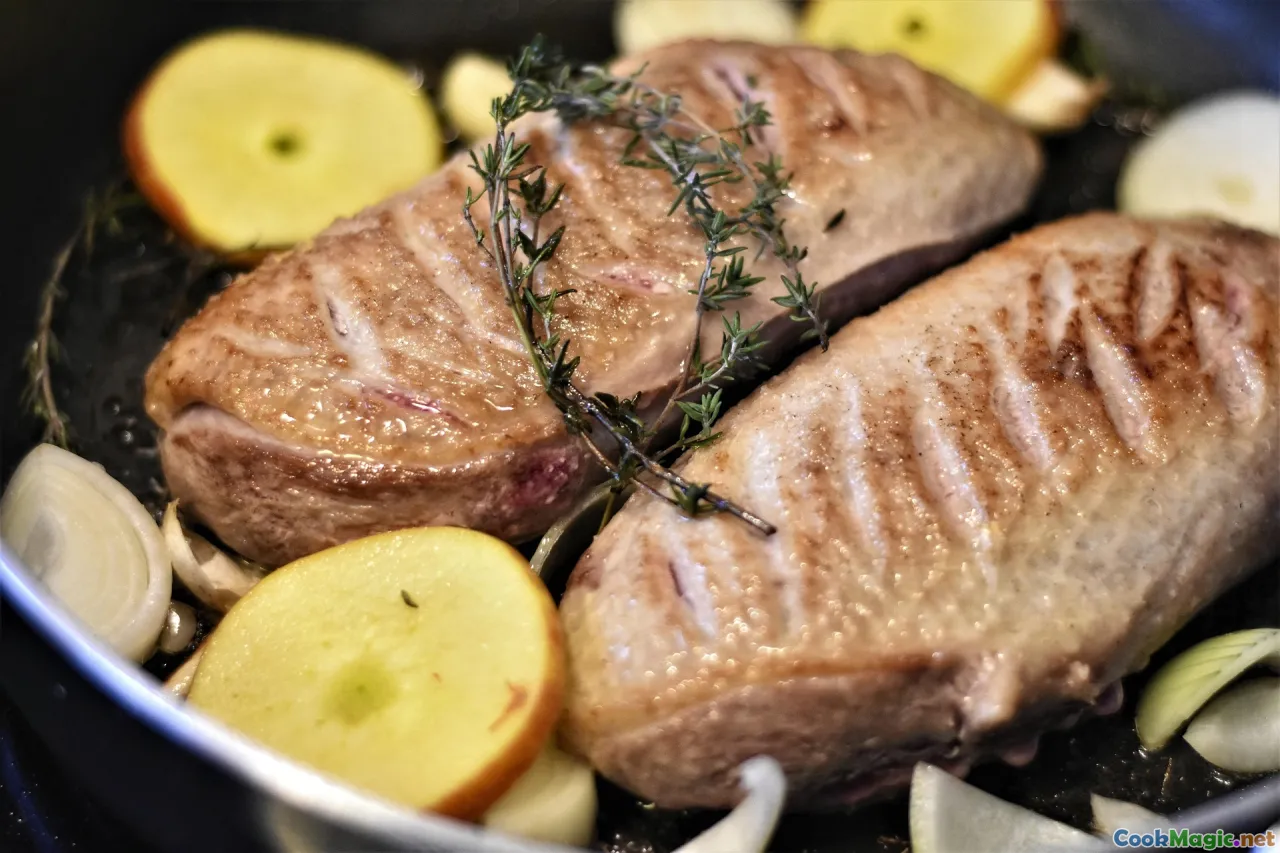
Yield: about 40–48 rusks
Equipment: 23×33 cm baking pan (9×13 inch) or two standard loaf pans; baking parchment; serrated knife; wire racks.
Ingredients:
- 900 g cake flour (about 7 1/4 cups lightly spooned)
- 200 g granulated sugar (1 cup)
- 12 g fine sea salt (2 tsp)
- 27 g baking powder (6 tsp)
- 3 g baking soda (1/2 tsp)
- 200 g unsalted butter, melted and cooled (14 tbsp)
- 80 g neutral oil, such as sunflower (1/3 cup)
- 2 large eggs (about 100 g total), room temperature
- 500–550 g buttermilk (2 to 2 1/4 cups), slightly warmed to take off the chill
- 2 tsp vanilla extract
Method:
-
Prep the pan and oven: Line a 23×33 cm pan with parchment, leaving overhang for easy lift. Heat oven to 180°C (160°C fan) / 350°F.
-
Combine dry ingredients: In a large bowl, whisk flour, sugar, salt, baking powder, and baking soda for a full minute to distribute leaveners evenly.
-
Mix wet ingredients: In a jug, whisk melted butter, oil, eggs, buttermilk, and vanilla until emulsified. The mixture should look creamy and homogenous.
-
Bring together: Make a well in the flour and pour in the wet mixture. Using a sturdy spatula or your hand, fold just until no dry flour remains. The batter will be thick—softer than bread dough, firmer than cake batter. If it feels dry and cracks when pressed, add 1–2 tbsp buttermilk.
-
Pan and level: Scrape into the prepared pan; lightly dampen your hand and smooth the surface. Score shallow lines where you intend to slice later (optional but helpful).
-
First bake: Bake 35–45 minutes until golden; a skewer should come out clean and the top should spring back. Rotate once for even color if needed.
-
Cool and slice: Cool 15 minutes in the pan, then lift onto a board. While still slightly warm, cut into finger-length bars (about 2×8 cm). A serrated bread knife is ideal—use a gentle sawing motion.
-
Dry: Arrange pieces cut-side up on wire racks set over baking sheets (or directly on lined sheets), leaving space between each piece. Reduce oven to 95°C / 200°F (or 80°C fan). Dry for 3–4 hours, flipping halfway, until crisp through. You can also switch off after 2 hours and leave the oven door propped open overnight.
-
Cool and store: Let rusks cool completely. Store in an airtight tin. They’ll keep their crunch for weeks.
Flavor note: This base recipe sings with that buttermilk tang and a clean butter finish. It’s designed for dunking—sturdy enough to grip, soft enough to sip into.
Three Variations, Thoroughly Tested

- Muesli & Seed Buttermilk Rusks (nutty, breakfast-bold)
- Start with the classic base but reduce flour to 850 g and sugar to 180 g.
- Add: 150 g toasted muesli (without chocolate), 50 g sunflower seeds, 30 g pumpkin seeds, 30 g desiccated coconut, and 75 g chopped dried apricots. Increase buttermilk by 30–50 g to accommodate the extra absorption.
- Seasoning: 1 tsp almond extract plus the vanilla.
- Method: Fold seeds and fruit into the dry ingredients before adding the wet mixture so they distribute evenly.
- Result: A rugged crumb with visible flecks, extra aroma from coconut and almond. Unbeatable with honeyed yogurt on the side.
- Aniseed & Naartjie Peel Buttermilk Rusks (winter-scented)
- Base recipe as above; add 1 1/2 tsp aniseed (lightly crushed) and the finely grated zest of 1–2 naartjies (tangerines).
- Sugar: Swap 50 g of the white sugar for light brown to deepen the spice profile.
- Butter: Brown half the butter until nutty, cool, then mix in—this complements aniseed beautifully.
- Result: The kitchen smells like a Cape winter pantry; the flavor is delicate and buttery, with a citrus lift that makes coffee taste brighter.
- Wholewheat & Amasi “Farmhouse” Rusks (hearty, old-style)
- Flour: 500 g cake flour + 400 g stoneground wholewheat.
- Sugar: 180 g.
- Fat: 180 g butter + 100 g oil for extra tenderness.
- Dairy: 550–600 g amasi (strain 10 minutes if very loose), warmed to room temperature.
- Tip: Let the batter rest 10 minutes before baking to hydrate bran.
- Result: A toasted, wheat-forward rusk with lingering dairy tang and an edge that caramelizes into deep copper.
Bonus: If you keep a sourdough starter, you can slip 100 g of unfed starter (discard) into the classic base and reduce buttermilk by 50–80 g. It won’t ferment the dough, but it will add gentle acidity and a pleasing chew.
A Baker’s Timeline for Busy Weeks
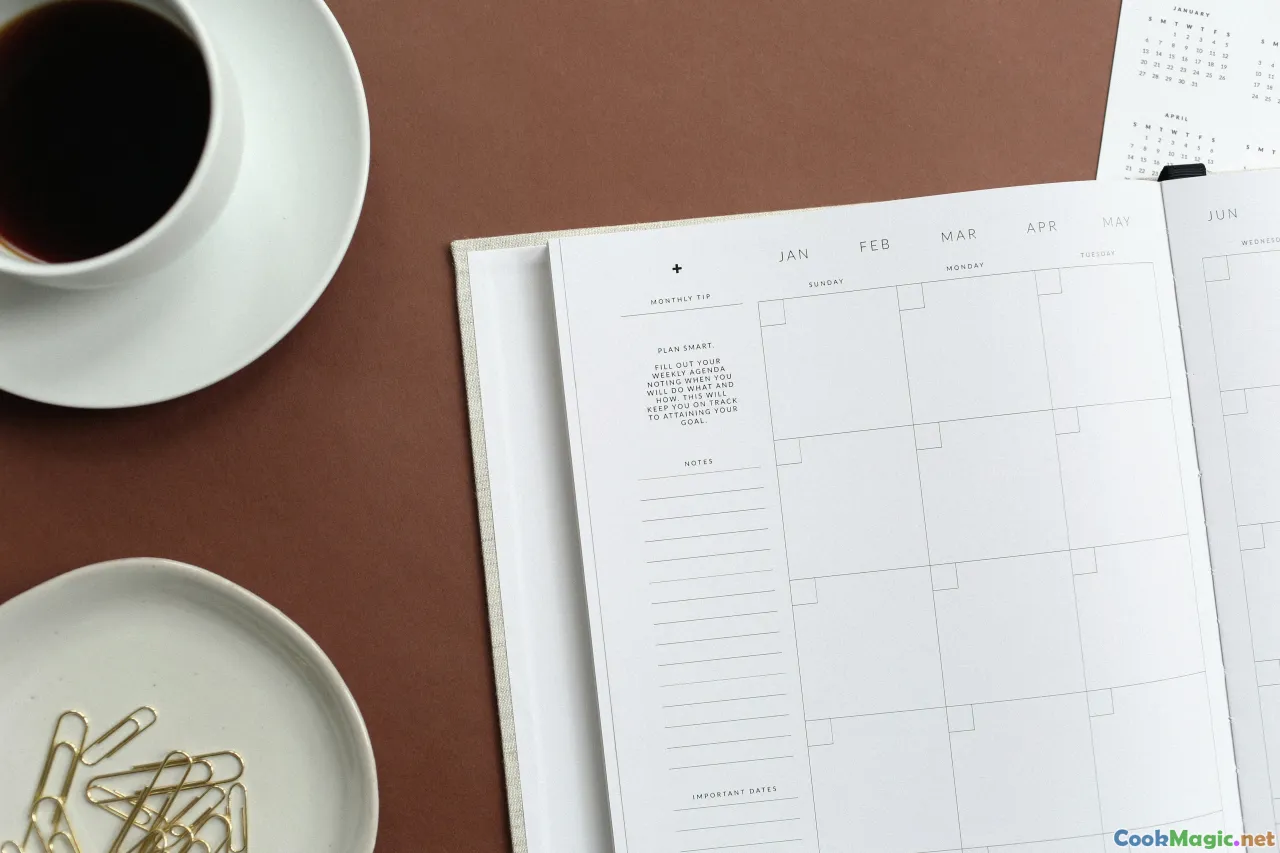
- Evening, Day 1: Mix and first bake. Cool to warm; slice.
- Overnight: Dry in a low oven switched off, door ajar, or in a dehydrator set to 70–75°C.
- Morning, Day 2: Finish drying 30–60 minutes if needed. Cool and tin. Coffee reward mandatory.
For restaurants and guesthouses, bake slabs in the afternoon service lull, dry overnight, and pack for breakfast service with small enamel mugs for dramatic dunking.
Biscotti, Mosbolletjies, and Rusks: A Friendly Comparison

- Biscotti (Italy): Twice-baked too, but typically leaner (little to no butter), egg-heavy, and made from a stiff dough shaped into logs. Expect a harder, glassier crunch with sweet almond notes; they soften less when dunked.
- Mosbolletjies (Cape): Yeasted buns flavored with grape must (or grape juice), often dried into rusks after the initial bake. They carry a winey, floral perfume and a pull-apart crumb. Buttermilk rusks, by contrast, are quick to mix and carry dairy tang instead of vinous sweetness.
- Buttermilk Rusks (South Africa): Part scone, part quick bread, with balanced fat and moisture for a generous crumb that dries to a dignified crunch—born for coffee.
Each has its place, but for a frosty morning on the Highveld, buttermilk rusks are king.
Texture Clinic: Troubleshooting and Tactile Cues

- Too hard, almost tooth-cracking: First bake was too long or the drying was too hot. Aim for a just-set crumb on the first bake, then dry at 80–95°C. Remember, drying isn’t a second bake; it’s a dehydration.
- Crumbly and sandy: Too little fat or overmixing. Keep to the fat ratios and fold gently. Stoneground wholewheat helps bind and adds slight chew.
- Greasy sheen that softens over time: Excess fat or insufficient drying. Next time, reduce oil by 10–20 g and extend drying by 30 minutes. Store lid slightly ajar for the first 24 hours to let residual moisture escape.
- Pale and bland: Increase baking time by 5 minutes in the first bake for more browning; consider 50 g of brown sugar for Maillard depth.
- Slices tearing: Slice while just warm, not steaming hot and not fully cold. A serrated knife is essential; wipe the blade every few cuts.
Sensory test: Tap two rusks together. If they ring with a hollow clink instead of a dull thud, they’re properly dry.
Coffee, Rooibos, and the Art of the Dunk
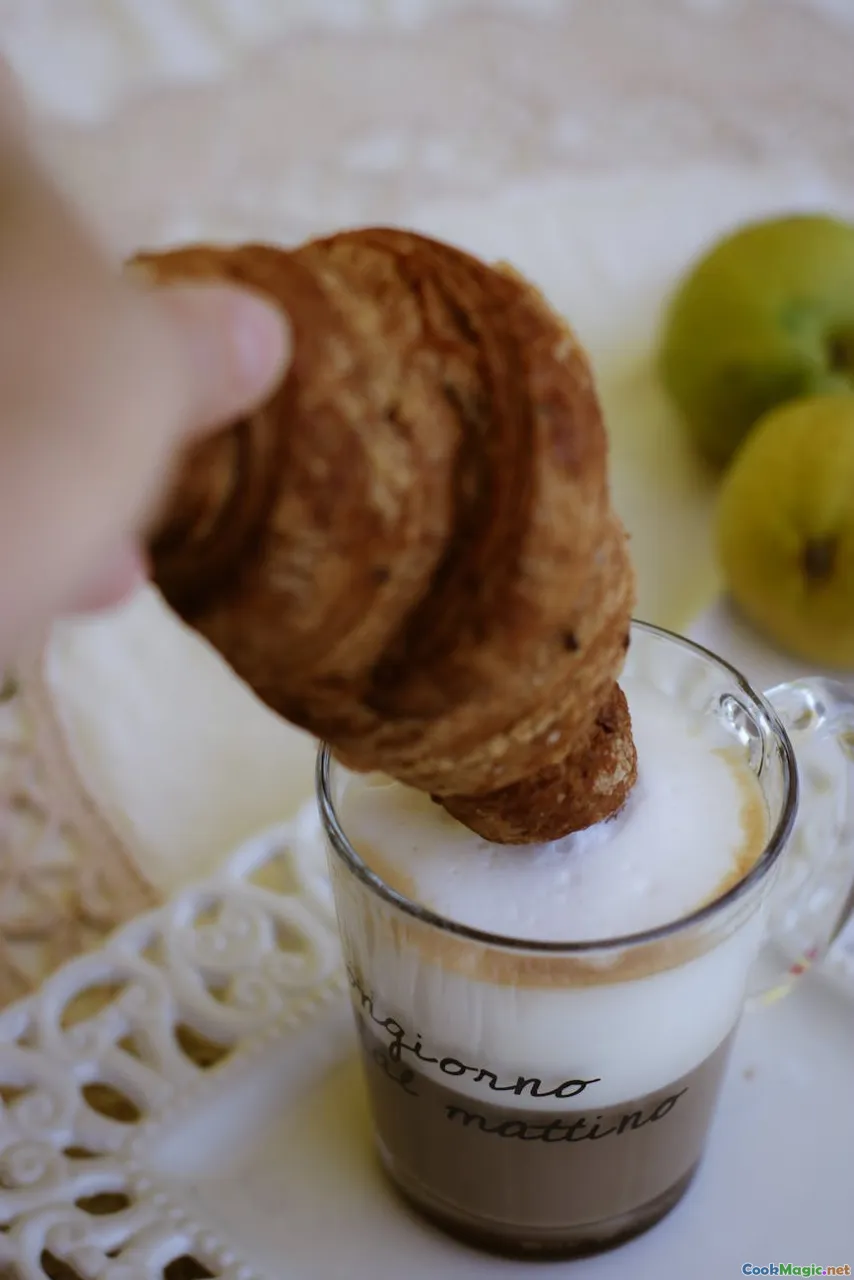
Rusk culture is dunk culture. The beverage completes the bite:
- Moer koffie: Coarse-ground coffee boiled in a kettle, grounds settled with a splash of cold water. Deep, smoky, perfect with aniseed.
- Espresso or Americano: For a city morning; the acidity plays well with citrus-zest rusks.
- Rooibos: Honeyed and herbal, ideal for muesli-and-seed rusks; add a slice of lemon to echo naartjie versions.
- Hot chocolate: A gentle playground for kids and late-night snackers.
Dunking technique matters: Two seconds in hot coffee for a classic rusk; one second for seed-heavy versions; three seconds for wholewheat rusks. You want the center to go plush while the edges hold.
Markets, Makers, and Where Rusks Live Public Lives

You’ll find rusks stacked like bricks at farmstalls along the N1 and N2, or packed into cellophane at weekly markets:
- Molteno, Eastern Cape: The spiritual home of Ouma Rusks, whose origin story threads through the town’s identity.
- Oranjezicht City Farm Market, Cape Town: Look for small-batch bakers with rusks perfumed by fynbos honey and local stoneground flour.
- Neighbourgoods Market, Johannesburg: Seed-heavy, artisanal takes appear beside pour-over coffee and jars of apricot konfyt.
- R62 farmstalls between Barrydale and Oudtshoorn: Old-style tins, sometimes scented with aniseed, often tagged with hand-written labels.
It’s not just commerce; it’s a public ritual. People buy rusks for guesthouses, hiking trips, new parents up all night, and long-distance drives where the glove compartment becomes a pantry.
Ingredient Sourcing: Local Flours, Honest Dairy

- Flour: Eureka Mills and Gideon Milling produce stoneground flours with traceable wheat. Sasko and Snowflake are reliable for cake flour with consistent protein, producing tender crumbs.
- Dairy: Buttermilk from national chains works fine; amasi from local dairies brings terroir. Choose full-fat for flavor.
- Seeds and fruit: Buy from bulk bins with good turnover; rancid seeds will ruin a batch. Toast seeds lightly to bloom oils.
- Butter: If you can find cultured butter, use it. The lactic notes stand tall after drying.
Sustainability note: Rusks reward local milling and dairy. The flavors are honest; you’ll taste the farm.
Serving Ideas Beyond the Dunk
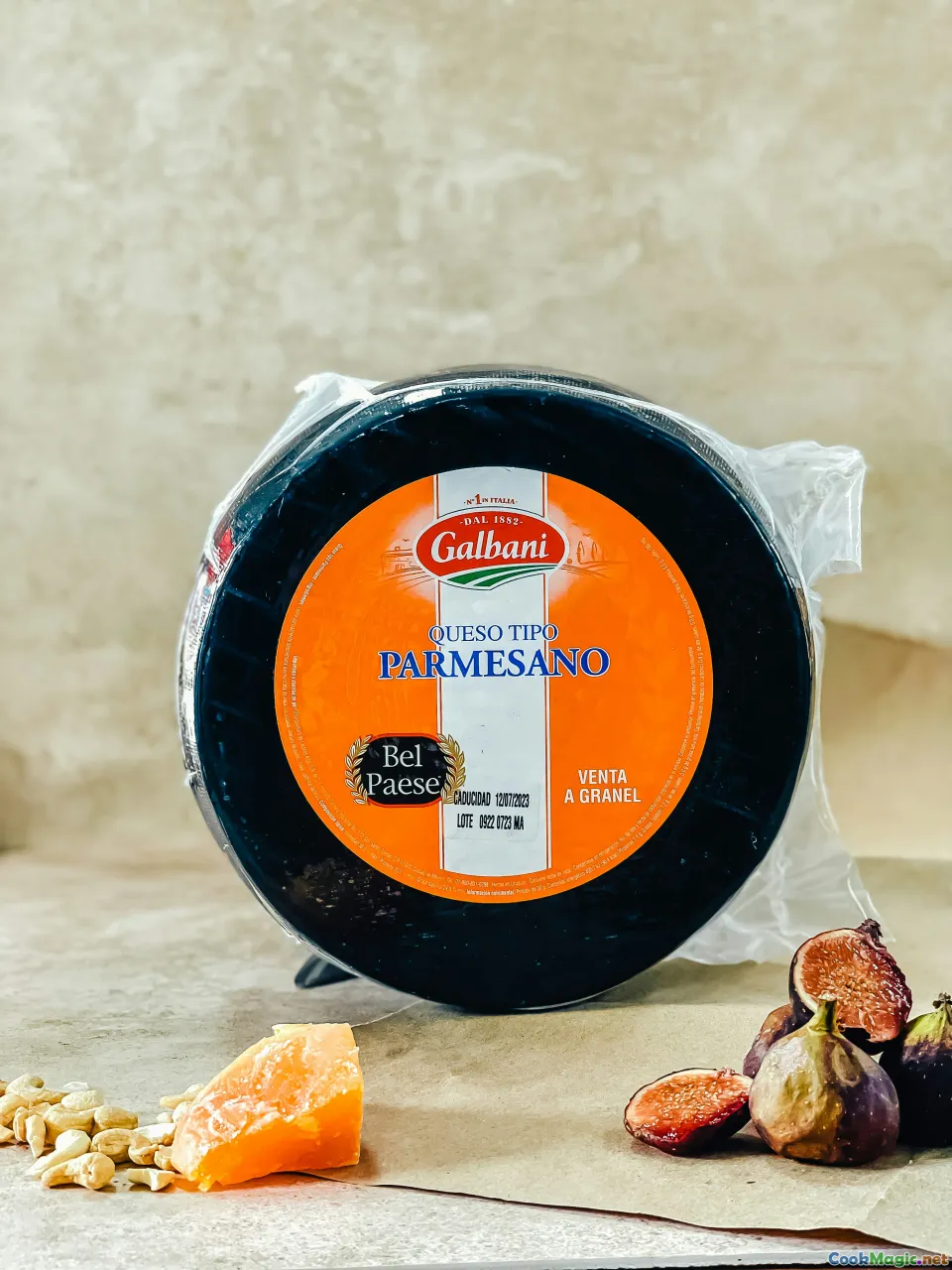
- With apricot konfyt and salted butter for a farm brunch.
- Crumbled over Greek yogurt with a drizzle of fynbos honey and fresh naartjie segments.
- Paired with aged cheddar and green figs preserve for a sweet-salty afternoon plate.
- On a breakfast board with biltong curls, olives, and tomato atchar—especially the seeded version, which loves savory company.
For a guesthouse flourish: Wrap two rusks in brown paper with a twine bow and a tiny card explaining the recipe’s origin. Place on the bedside table with rooibos sachets. Hospitality in one gesture.
For Highveld Winters and Cape Summers: Climate Adjustments
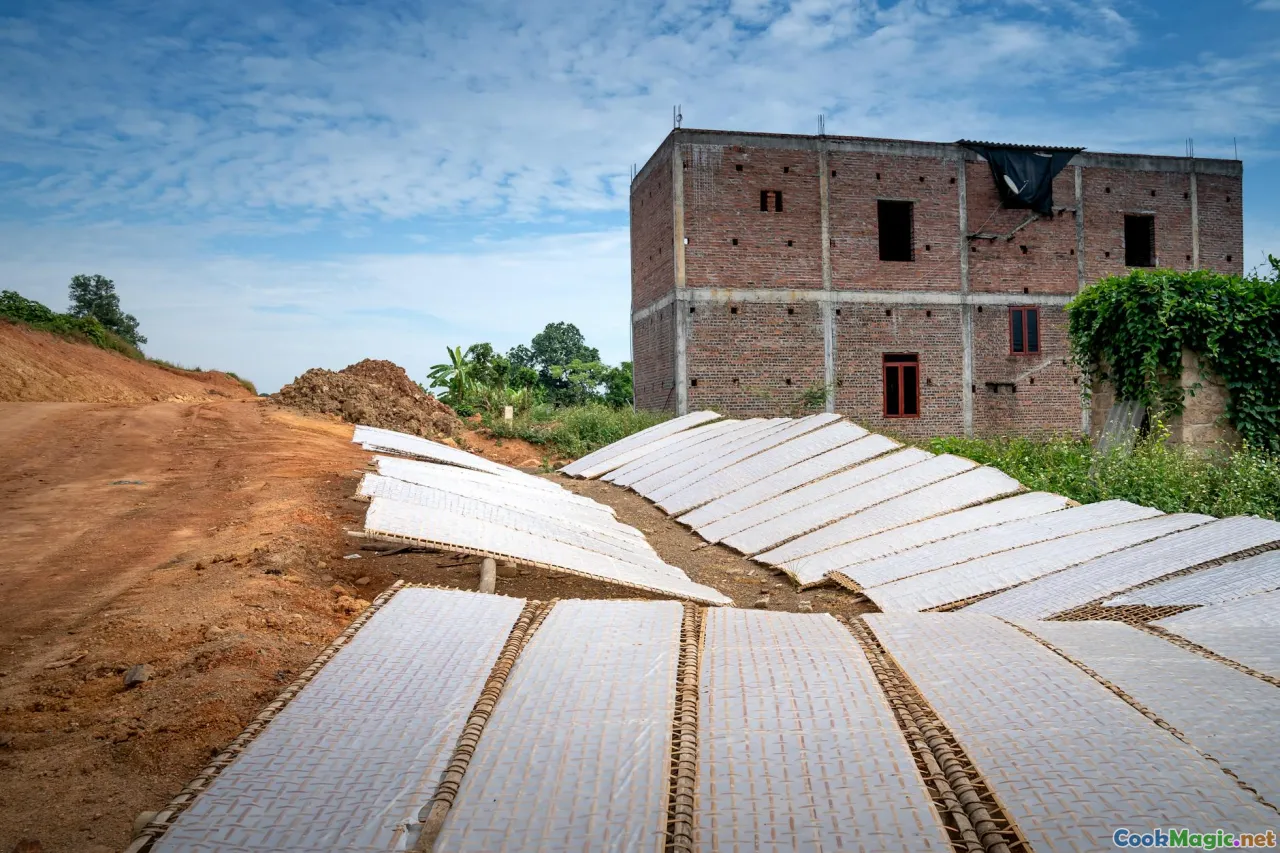
- Dry Highveld air (Johannesburg, Pretoria): You can dry rusks faster, but watch for over-drying that leads to brittle, powdery crumbs. Keep to 85–90°C and check early.
- Humid coastal air (Durban, summer Cape Town): Extend drying time and let rusks cool in the switched-off oven to avoid reabsorption. Store with a packet of food-safe desiccant or a few grains of uncooked rice in a muslin pouch inside the tin.
- Campfire workaround: On a braai grid near coals, with a lidded kettle braai barely cracked, you can dry rusks outdoors. Keep the heat ghostly; you want warmth, not toast.
A Short History, Baked into Every Batch

Think of rusks as edible migration. The double-bake method traveled, survived, and put down roots. In South Africa, it met buttermilk and amasi, stoneground wheat, and the ritual of coffee at sunrise. In 1939, a small bakery in Molteno began scaling a family recipe under the name Ouma, and the brand eventually threaded rusks into the national pantry. Meanwhile, farm kitchens kept evolving the form: condensed milk rusks for extra sweetness in some families; anyseed for others; muesli for the modern breakfast table.
The rusk persists because it’s practical and emotional. It feeds night-shift nurses and early-morning truck drivers; it tethers expats to home when posted abroad. In the Kruger, guides carry a Tupperware of rusks for that first stop at a viewpoint, steam lifting from tin mugs as the bush wakes up. It is a food of usefulness, and, paradoxically, of leisure.
Costing, Scaling, and Professional Workflow
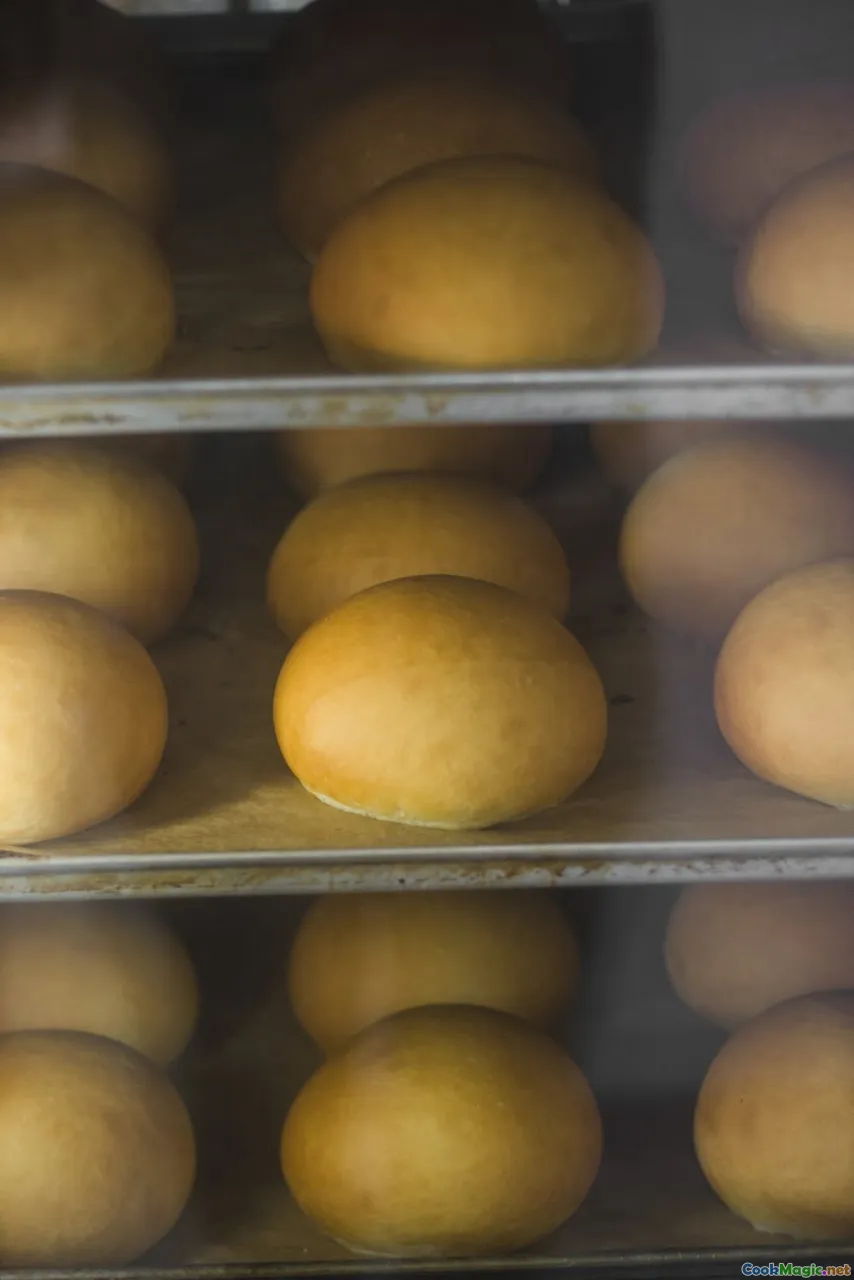
For cafés and lodges, rusks are menu gold: low waste, long shelf life, high perceived value.
- Scaling: The classic recipe doubles into two 23×33 cm pans or one half-sheet pan with a parchment sling. Keep batter thickness around 3.5–4 cm for clean slicing.
- Consistency: Score before baking to guide portioning. Aim for 40–50 g per rusk pre-drying; post-drying weights often land around 35–42 g.
- Cost tips: Use a butter/neutral oil blend to balance flavor and cost. Stoneground flour increases ingredient cost but enables premium pricing.
- Labor: Mix and bake in 1 hour; slice at 15 minutes; dry hands-off for 3–4 hours or overnight. Pack the next day. Minimal active hours, maximum aroma in the space.
Labeling note: If selling, list allergens clearly—wheat, dairy, eggs, seeds, nuts if included. Shelf life is generous, but put seven to fourteen days on the bag for best crunch, with a “re-crisp in a 100°C oven for 10 minutes” tip.
The Feel of a Good Rusk: Sensory Notes for Cooks

Sight: Rusks should wear a toasted-wheat coat with paler sides where they leaned into neighbors on the drying rack. The crumb shows tight, even cells—no tunnels.
Touch: Dry, not dusty. Edges hard with a faint waxiness from butter. When you press a thumbnail into the side, there’s no give.
Sound: A well-dried rusk has a crisp, high-pitched snap, not a clack. When dropped lightly on a board, it makes a soft wooden knock.
Smell: Buttermilk and brown butter, a line of vanilla, the ghost of toasted sugar. Aniseed variants bloom when broken.
Taste: The first crumb is mellow; coffee pulls out salt and butter. Seeded versions finish with sesame warmth; wholewheat leaves a walnutty echo.
Storage, Tins, and the Romance of Keeping

The right container matters as much as the bake. Metal tins—vintage Ouma, floral Quality Street repurposed, or plain bakery tins—preserve crispness and carry a whiff of ceremony when opened. Glass jars show off the geometry but risk condensation if you rush the cool-down. Plastic is practical but can dull the snap if the fit isn’t perfect.
- Always cool completely before sealing.
- If you live coastal, don’t pack rusks on a rainy afternoon; the air will have its way. Wait or finish in a low oven first.
- If they soften after a week, spread on a tray and re-dry at 90–100°C for 10–15 minutes. Let cool in the oven.
Personal Notes from Road and Stove

On a winter road trip up the N1, I once stopped at a padstal near Beaufort West where the owner kept rusks warm above the pie warmer “just to perfume the shop.” They sold them by the bag, tied with red string, and offered tastes to anyone holding coffee. That fragrance—buttery toast with a citrus hum—hung in the car all the way to Richmond.
Another time, at a Drakensberg campsite, we dried a batch on the open lid of a kettle braai, watching the coals fall from red to ash while stars crowded the sky. In the morning, we dunked rusks in enamel mugs and watched mist lift off the grass in sheets. The rusks carried a faint smoke line and somehow tasted like we’d baked home itself into them.
Tips You’ll Actually Use

- Warm the buttermilk slightly so melted butter stays liquid when mixed; cold buttermilk can re-solidify butter into dots.
- Weigh ingredients; rusks tolerate imprecision, but they reward accuracy with consistent crumb.
- Score before baking if you want perfectly uniform fingers; the lines guide the knife.
- Dry on wire racks over trays: better airflow, better crunch.
- Add a pinch more salt than you think you need. Dunking mutes salt; you want that lift.
- Zest citrus directly into sugar and rub with fingers to release oils.
- For gift bags, include a card with dunking times. People love rules they can break.
Bringing It to the Table

Breakfast traditions are shorthand for belonging. Buttermilk rusks occupy that rare space between practicality and nostalgia—the kind of food you make on a Thursday night because you’re having family over on Saturday morning; the kind of snack you sneak to a friend in a brown paper bag when they’ve had a long week; the thing you pack for a dawn drive to watch the sea turn silver.
Bake a batch, and your kitchen will smell like a conversation between wheat and butter, between history and appetite. Keep a tin on the counter, and it becomes an invitation: to dunk, to linger, to tell a story. South African cuisine is crowded with great shoulders—bobotie, sosaties, koesisters—but the humble rusk is the quiet backbone of a hundred mornings. And in the simple act of mixing buttermilk into flour, of baking and drying and waiting, we participate in a ritual older than any of us, one that turns time itself into flavor.









